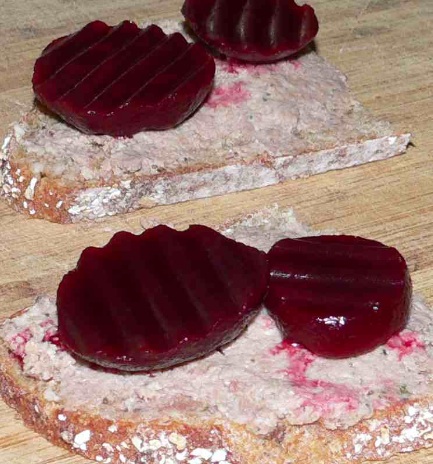Following a spate of campylobacter outbreaks linked to chicken liver paté in the U.K., researchers at Aberdeen University found the bug in more than 80 per cent of packs of chicken liver paté bought from supermarkets and butchers during a two-year survey.
The Scotsman.com cites Dr Norval Strachan, the researcher in food safety and epidemiology who led the study, as saying the bug had been found in 81 per cent of raw chicken livers purchased from a typical range of supermarkets and butchers over a two-year period. “… last year 14 outbreaks of the bug in the UK were associated with consumers eating chicken or duck liver paté.  By cooking the livers properly and ensuring good hygiene in the kitchen these episodes can be avoided. However, some celebrity chefs and many recipes advocate only partially cooking chicken liver to ensure that it is pink in the middle.”
By cooking the livers properly and ensuring good hygiene in the kitchen these episodes can be avoided. However, some celebrity chefs and many recipes advocate only partially cooking chicken liver to ensure that it is pink in the middle.”
Dr Jacqui McElhiney, policy adviser at the Food Standards Agency in Scotland, underlined the need for proper precautions to be taken to prevent the risk of food poisoning.
“Unfortunately, levels of campylobacter in raw chicken are high, so it’s really important that chefs thoroughly cook chicken livers fully to kill any bacteria, until there is no pinkness left in the centre, even if recipes call for them to be seared and left pink in the middle. “It’s the only way of ensuring the paté will be safe to serve.”
This is all sorta confusing: researchers found 80 per cent of raw chicken liver contaminated with campylobacter, but said they were looking at packs of chicken liver pate at supermarkets. But the food safety folks blame celebrity chefs? Do they make pre-packaged pate? Are consumers supposed to cook paté they buy pre-packaged at the supermarket? Guess they were talking about raw liver. So then what about the risk of cross-contamination. Maybe something is lost in translation; I speak Scottish as fluently as Australian.
And pinkness is a lousy indicator of whether any meat has been cooked to reduce dangerous bacteria such as campylobacter. So is piping hot.
